‘Ksan means “the river of mist.” Today’s maps label it the Skeena River. “Git” means “the people of.” Gitxsan translates to “the people of the river of mist.” We’re off on an adventure exploring Northern B.C. and the cultural hub of the Gitxsan along the Skeena and its tributaries is a must-see, starting with the ‘Ksan Historical Village.
Disclosure: This post contains Affiliate links.
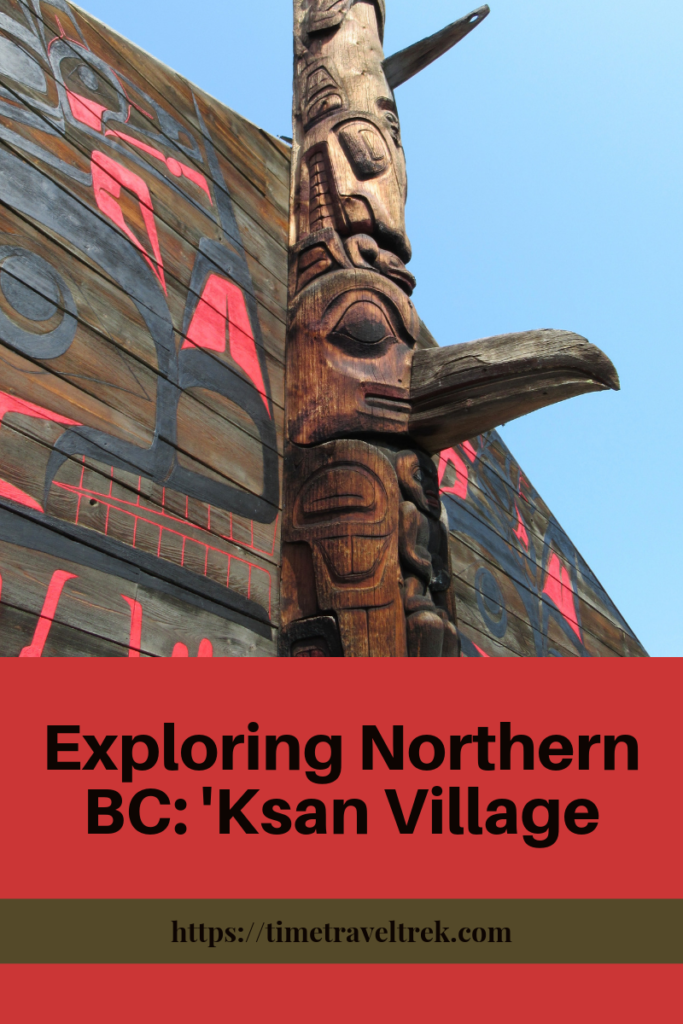
Table of Contents
‘Ksan Historical Village
‘Ksan is a reconstructed Gitxsan village built at the confluence of the mighty Skeena and Bulkley Rivers. It is situated several hundred kilometres upstream of where the Skeena flows into the Pacific Ocean. It is a place where people have gathered for centuries and where people still gather today. The neighbouring village of Gitanmaax – meaning “people of the torch light fishing” – is a thriving example.
As we head off Highway 16 exploring Northern BC, we pass through the scattered homes of New Hazelton. The road narrows before crossing a single-lane bridge. The Bulkley surges deep within Hagwilget Canyon below before making a sharp turn on its way to meet the Skeena. Dropping down through Gitanmaax on the way to Old Hazelton, we approach ‘Ksan on the left.
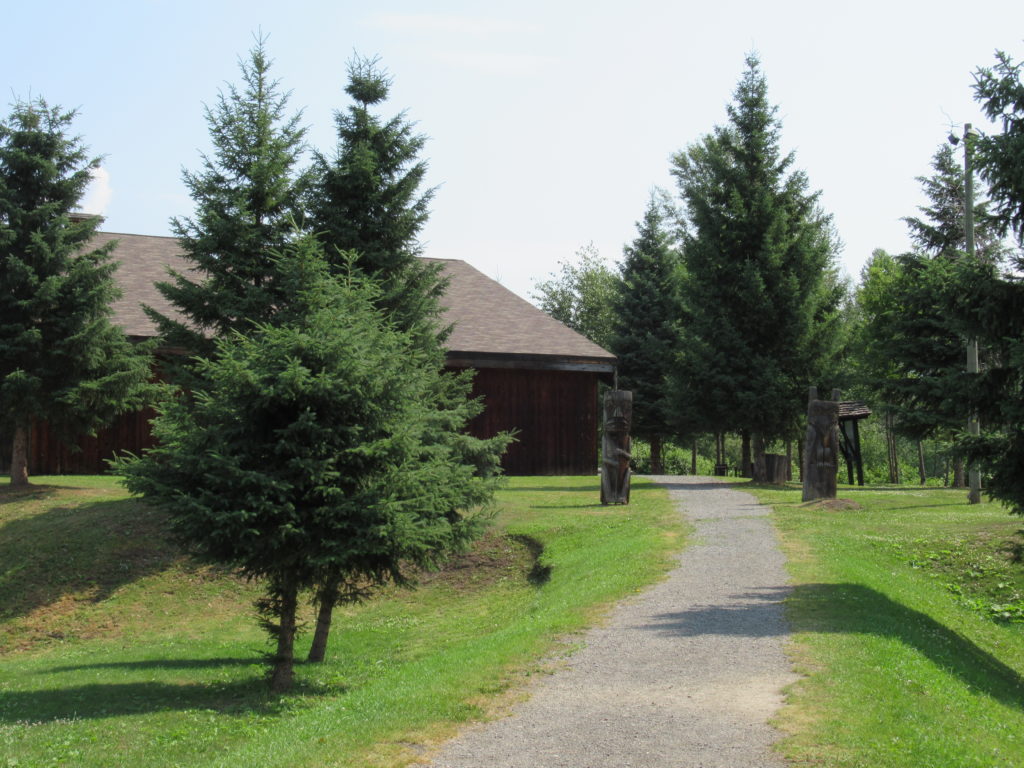
Museum Tour
The first building includes the small museum and gift shop. Entrance is by donation. Guided tours that include entrance to three of the long houses is usually available, but sadly not today. The museum starts with displays on basketry, detailed bird rattles used in ceremonies and goat horn spoons. Other ceremonial artifacts include whistles, used to create the sounds of spirit creatures or to make contact with the supernatural, and exquisitely woven Chilkat blankets. Each of these ceremonial garments take about 18 months to make. Button robes and dance aprons also hang in glass cases.
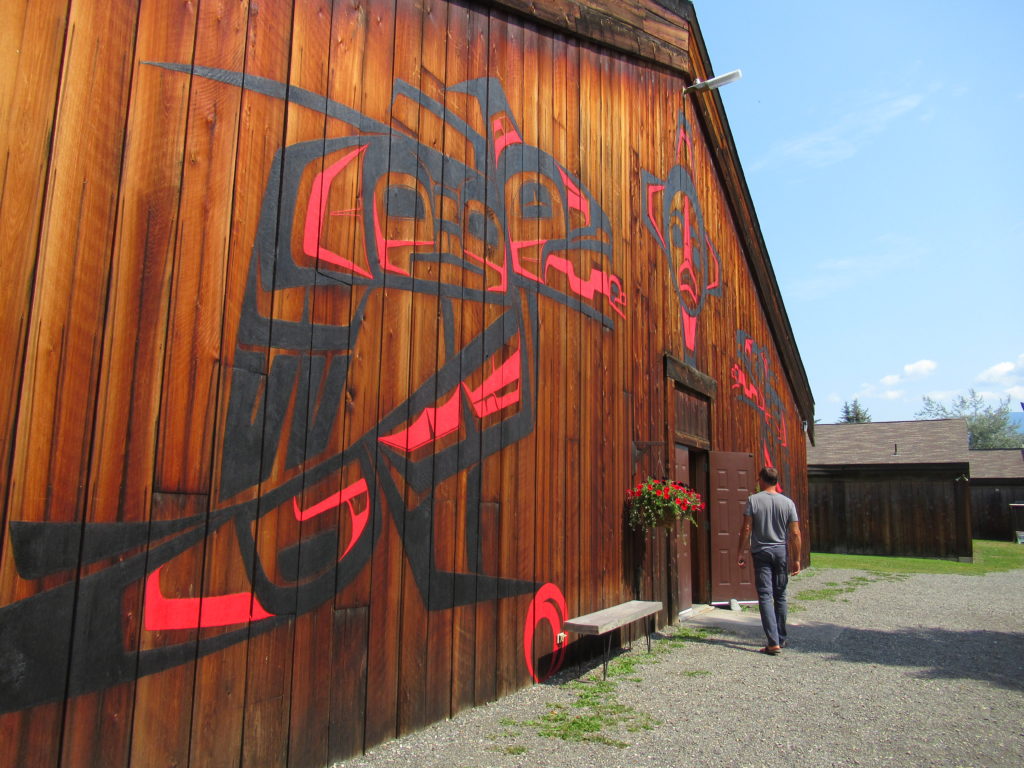
Close connection and trade to the pacific coast can be seen in the fringes of dance aprons adorned with puffin beaks. Due to their rarity, they were a sign of great wealth. Copper was another traditional sign of wealth and power. Bentwood boxes were used to hold an individual’s belonging and then would hold the bones of the person after they left this life.
Master Carver
Stepping out into the sunshine, we peered into the second building and saw master carver Daniel. He welcomed us in with a smile. Daniel was working on one of four commissioned totem poles. Cedar scent filled the air. Each pole was required to have one of the four clan totems on the top – Frog, Wolf, Fireweed and Eagle – but after that Daniel had creative licence to add whatever he wanted. He was adding hearts for his granddaughter on one of the poles. The pieces were seven months in progress and he figured had another seven months of work to completion. Thanks for taking time to talk with us, Daniel!
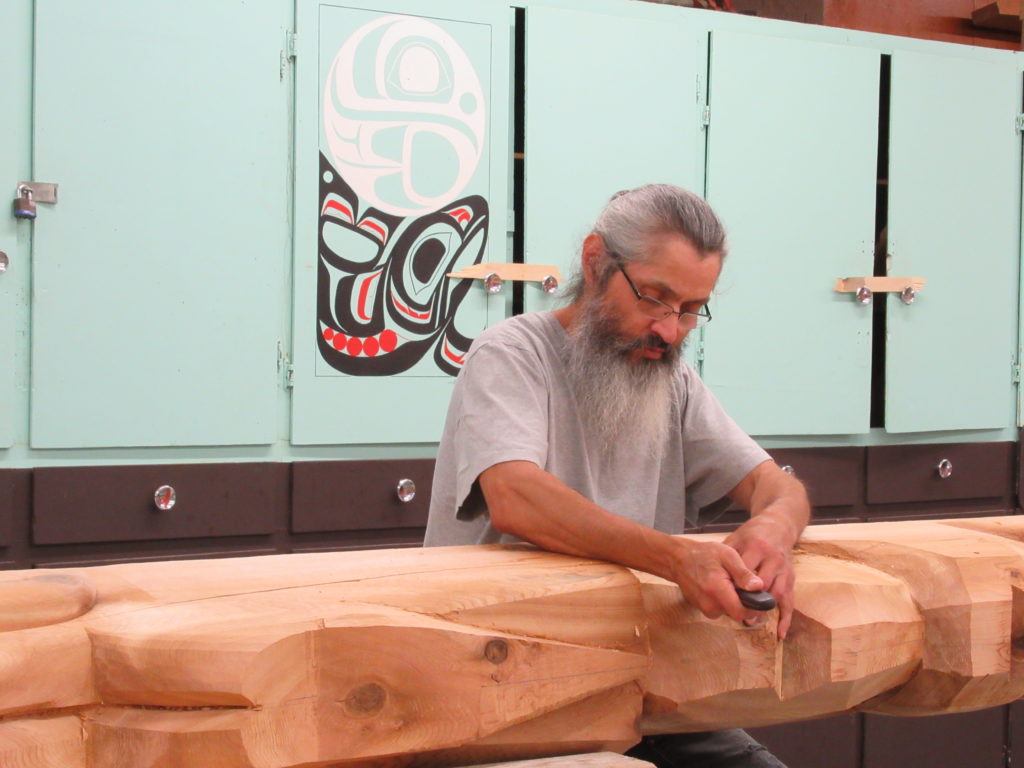
Totem Pole Tour
As with Daniel’s totem poles, all of the longhouses were constructed of red cedar. Painted art graces the outside of each building and tall totem poles stand in front. A small pamphlet available at the museum helps interpret the images found in each pole. One contains a crest for each of the four Gitxsan clans. Another the pole of Bear Mother. The Dog Salmon pole is a copy of the original pole now preserved in the National Museum of Man in Ottawa, Ontario. The Meeting Place pole was raised to honour the opening of ‘Ksan Village in 1970.
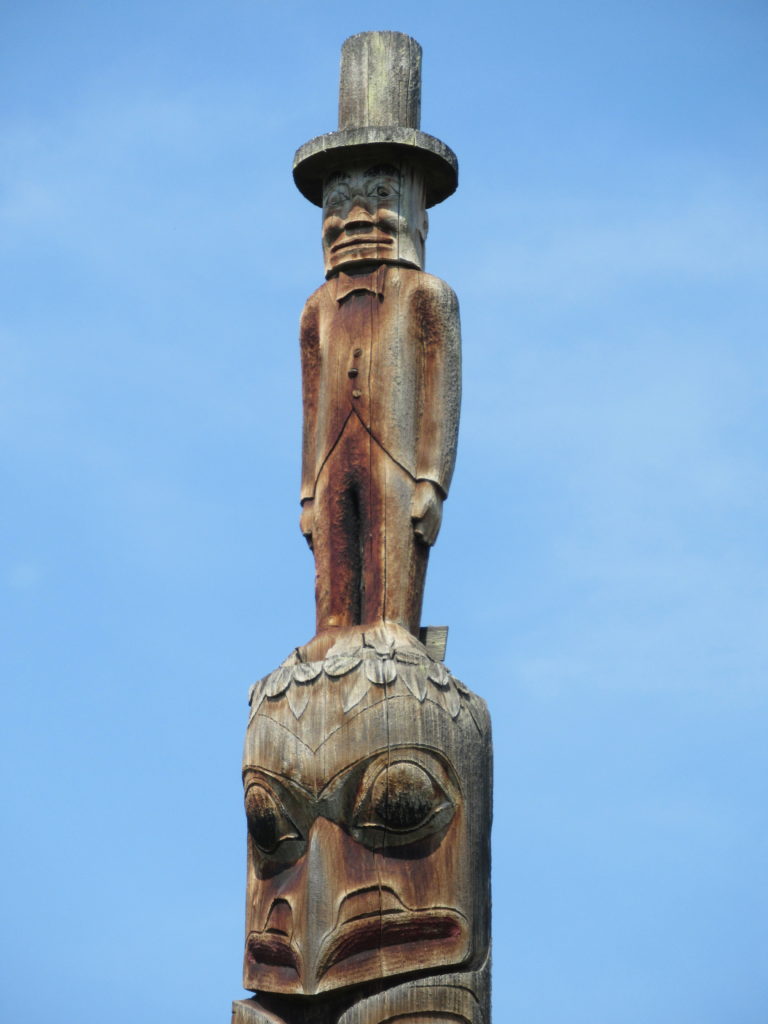
While our visit was short, the desire to see more of the Gitxsan culture is strong and we are off to see the poles of Kispiox and explore Gitwangak, Battle Hill and Gitanyow. Stay tuned for updates on the Totem Tour!


Leave a Reply